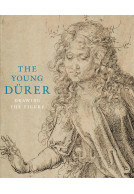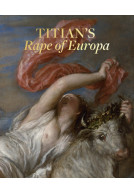Important European Terracottas: Tomasso Brothers Fine Art (Paperback)
(click here for international delivery rates)
Need a currency converter? Check XE.com for live rates
This catalogue presents a selection of important European terracotta sculptures from the neolithic to the neoclassical periods. The accompaning exhibition traces the history of ‘fired clay’ starting with the Vinca civilisation of South-Eastern Europe in the fifth millennium BC, which produced the fascinating Idol of a Mother and Child in the show and from there, via the ancient classical period and the Renaissance, to the high baroque, ending with the neoclassical era.
Among the works included is a North Italian idealised Portrait Relief of a Lady from the late fifteenth century, and an attentively described Portrait Bust of a Man from Emilia in Northern Italy, ca. 1500. Both testify to the birth of terracotta as a medium for portraiture which continued well into the early modern era. Among further highlights is a Portrait Bust of a Gentleman by the rare Flemish sculptor Servatius Cardon (1608–1649) and a poignant Portrait of a Young Man attributed to the great French artist Philippe-Laurent Roland (1746–1816). The latter work is a beautiful representation of the birth of the modern portrait, where hierarchy and status give way to the expression of individuality and emotion. Parallel to this, the exhibition and catalogue demonstrate how terracotta was essential
to artistic practice as a means for sculptors to develop ideas and compositions, shown by a recently rediscovered terracotta model for an allegorical representation of Winter, by the Venetian baroque master Giovanni Bonazza (1654–1736), which offers a crucial insight into
the work of the sculptor, presenting a highly accomplished model for a finished work to be carved in either stone or marble.
A similar case is illustrated by a Character Head executed by Antonio Canova (1757–1822) around 1780, when he was still a young sculptor on the cusp of greatness. Inspired by the famous Laocoön group in the Vatican, this terracotta exists as an invenzione in its own right, and so a testimony to the sculptor’s search for his own artistic vocabulary. Deeply and richly modelled, the Character Head betrays a preoccupation with the representation of emotions, framed within a wider exploration of antiquity that would be a central theme
throughout Canova’s career.
Another remarkable discovery and a highlight is a terracotta model for a figure of Saint Mark by Giuseppe Piamontini (1664–1742), a colossal marble statue carved for the new baroque church of Santi Michele e Gaetano in Piazza Antinori on the central Via
Tornabuoni in Florence.














